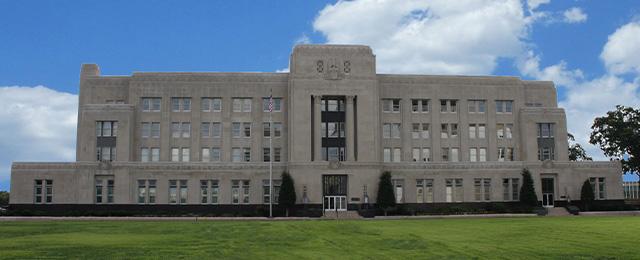Welcome to the Walter E. Hoffman United States Courthouse, a striking example of Art Deco architecture nestled in downtown Norfolk, Virginia. This building, originally known as the U.S. Post Office and Courthouse, has been a cornerstone of Norfolk’s judicial and postal operations since its completion in 1934.
The courthouse was conceived during a period of economic prosperity in Norfolk, driven largely by the growth of the local Naval Base. However, by the early 20th century, the city found itself in dire need of a larger facility to accommodate its burgeoning postal and judicial demands. Despite numerous petitions throughout the 1920s, it wasn’t until 1929 that Congress allocated funds for a new federal building. The construction was part of a broader federal initiative to bolster public infrastructure during the Great Depression.
Designed by local architects Benjamin F. Mitchell and the firm of Rudolph, Cooke, and VanLeeuwen, the courthouse boasts a lavish Art Deco style, characterized by its gray limestone facade and intricately crafted interiors. Its grandeur was noted by the local press at the time, with the Virginian-Pilot describing it as ‘little short of magnificence.’
One notable figure associated with the courthouse is Mary Brown Channel, who joined the architectural team after graduating from Cornell University. In 1935, she became the first woman licensed to practice architecture in Virginia, marking a significant milestone in the state’s architectural history.
Over the years, the courthouse has played a vital role in the administration of justice in the Eastern District of Virginia. Its historical significance was recognized in 1984 when it was listed on the National Register of Historic Places.
As you stand before this historic edifice, imagine the many pivotal legal decisions and the countless stories of justice and civic duty that have unfolded within its walls. The Walter E. Hoffman Courthouse is not just a building; it’s a testament to the city’s resilience and its evolution over time.




